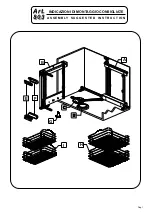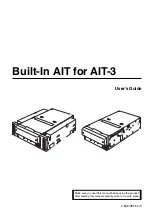
50
Chapter 3: System Administration
The Create iSCSI Volume screen appears.
Create iSCSI Volume
Item
Description
iSCSI Target Volume
Enable or Disable the iSCSI Target Volume.
Target Name
Name of the iSCSI Target. This name will be used by the Stackable NAS function to identify this ex-
port share.
iqn_Year
Select the current year from the dropdown.
Iqn_Month
Select the current month from the dropdown.
Authentication
You may choose CHAP authentication or choose None.
Username
Enter a username.
Password
Enter a password.
Password Confirm
Reenter the chosen password
Mutual CHAP
With this level of security, the target and the initiator authenticate each other.
Username
Enter a username.
Password
Enter a password.
Password Confirm
Reenter the chosen password
RAID ID
ID of current RAID volume.
LUN Allocation
Two modes can be choose from:
Thin-provision: iSCSI thin-provisioning shares the available physical capacity to multiple
iSCSI target volumes. It allows virtual capacity to be assigned to targets prior to adding
physical space when it has run out.
Instant Allocation: Allocate available physical capacity to iSCSI target volumes.
LUN Name
Name of the LUN.
Unused
Unused space on current RAID volume.
Allocation
Percentage and amount of space allocated to iSCSI volume.
LUN ID
Specific Logic unit ID number.
iSCSI Block size
The iSCSI block size can be set under system advance option, default is 512 Bytes.
[ 4K ] block size while more than 2TB capacity will be configured in Windows XP.
[ 512 Bytes ] block size for application like VMware etc.
Be sure the iSCSI target volume has been enabled or it will not list out
while using Initiator to get associated iSCSI target volumes.
















































